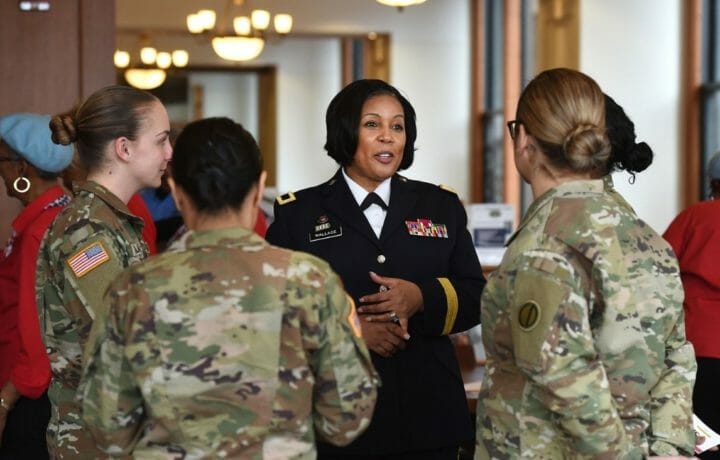As Women History’s Month wraps up, there is still more work to do to highlight military women. Throughout the month of March, many different organizations worked to highlight military women and the veteran community had many examples of panels, interviews, and programs to showcase the stories of military women past, present, and future. The history of women – especially military women – is rich and bright.
Unique Challenges for Women During and After Military Service
The University of Alabama is currently working on a national survey, “Assessing the Needs of Women Who Served in the U.S. Armed Forces.” Women are experiencing transitioning challenges differently from their male counterparts. According to Dr. Destinee Prete dissertation on Post 9/11 Female Veteran Workforce Transition Experience: A Multiple Case Study, she found that women often struggle with transition based on four common themes. The primary themes focused around a non-traditional route, identity shift, recognition, and the failures of the traditional program and a need for change. The goal of the survey is to gain a deeper understanding of the challenges women face as they transition from military to civilian life.
The statistics and data show there are so many challenges for women not only when they are in the military but when they leave the military behind. Women veterans are 1.8 times more likely to commit suicide than civilian women. And women comprise the fastest-growing segment of the homeless veteran population. Some studies found that women have a Military Sex Trauma (MST) rate incident as high as 33%. Not to mention the common misperception around military women and their service. Women are regularly questioned about their military service and sometimes find it easier to not identify as a veteran instead of dealing with the questioning or negativity they can sometimes experience by both other veterans and civilians. It can lead to isolation and loneliness. This adds to the fact that women are much more likely than their male counterparts to not use the VA services with reports showing that as high as 87% of female veterans do no use VA services.
The University of Alabama Can Help Shed Light
The study being done by The University of Alabama already has over three thousand women veteran participants. But the more respondents, the more impactful the data collected will be for researchers. The study asks about the participants’ time in the armed forces, the participant needs, experiences, and preferences relating back to your transition back to civilian life. All answers will be anonymous and will not be tied back to the respondent in any way. The study is comprised of two parts. The first part is short and allows researchers to gain high-level information about women veterans. Women are then given the opportunity to complete a longer, more in-depth study to give researchers more information about women veterans and their experience. The whole survey takes 20-30 minutes to complete.
Results Can Help Future Generations of Military Women
The organizers of the study plan to share the data with organizations that helped spread the word about the study. The University of Alabama will use the data they collected for their own research purposes as well. And the data provided will be able to impact more programs and groups through the distribution network. The goal is for the survey to make an impact on the community of women veterans and the organizations that serve them. If you are a woman veteran or know a woman veteran, encourage them to take this survey. This survey can not only help the women who have served in the military but the information collected could help the future generations of military women. Every voice matters.




